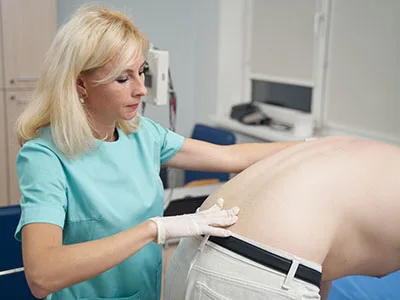
Identify and Heal Sacroiliac (SI) Pain
Lower back pain is a common ailment, and the second most prevalent form is known as sacroiliac pain or SI pain. Understanding the anatomy and symptoms of the sacroiliac joint (SI joint) can help demystify this often-overlooked source of discomfort. In this article, we'll explore what SI pain is, its symptoms, and how to effectively manage and heal it.
Understanding Sacroiliac Pain: The sacroiliac joint is where the sacrum, the bottom of the spine, meets the ilium or the pelvis. This joint exists on each side of the pelvis, and like any joint, it comprises two bones forming a space for movement. The SI joint has limited movement, but it does have some, and when the space between the bones narrows, friction occurs. This friction leads to inflammation, creating pressure and ultimately causing pain. Unlike some other types of low back pain, SI pain can be elusive on traditional imaging like x-rays or MRIs, making diagnosis challenging for some medical professionals. However, physical therapists can easily identify whether the pain in your back is due to the SI joint or some other reason.
How to Tell if You Have SI Pain: The most common symptoms of SI pain manifest on one side of the lower back, with the pain being highly localized. Patients can often pinpoint the exact spot with their thumb. Unlike other lower back issues, SI pain typically doesn't cause pain radiating down the leg; instead, it tends to affect the groin or pelvic region. Pain while sitting is the most common complaint, and SI pain can affect individuals of all ages, especially during or after pregnancy.
Managing SI Joint Pain: Dealing with SI joint pain involves a holistic approach that considers the entire body. It's essential to recognize that the SI joint itself is not the problem but rather a symptom of improper motion in the pelvis, hips, or spine. The goal is to reduce friction in the SI joint by addressing the surrounding areas. Although SI pain might not appear on conventional imaging, a global approach to the body's motion can provide effective relief.
Healing SI Joint Pain: The positive news is that SI joint pain is highly treatable, with healing rates reaching up to 95%. Unlike some other conditions like disc herniations, SI joint pain responds well to a comprehensive approach that looks at the entire body. By addressing improper motion in the pelvis, hips, and spine, individuals can experience significant relief and healing.
Physical Therapy that improves motion within three planes can heal SI pain, along with some bonus benefits such as improved flexibility, strength and balance.
See when our next FREE Back Pain Relief workshop is and get all your back pain relief questions answered once and for all! Click here: Free Low Back Pain and Sciatica Workshop (thesuperiortherapy.com)
Get your FREE copy of Dr. Gorecki's book, "The Truth about Lower Back Pain" here: Low Back Pain Book



